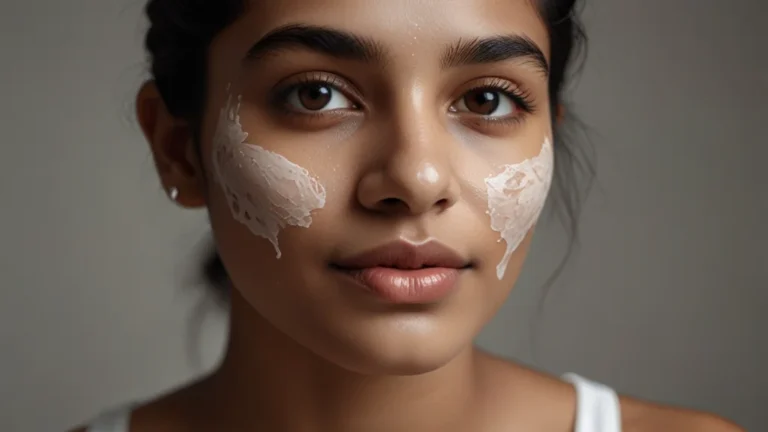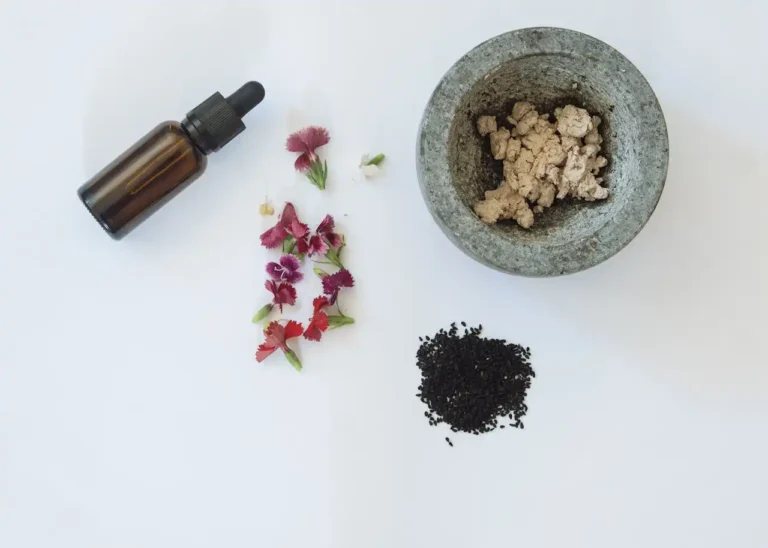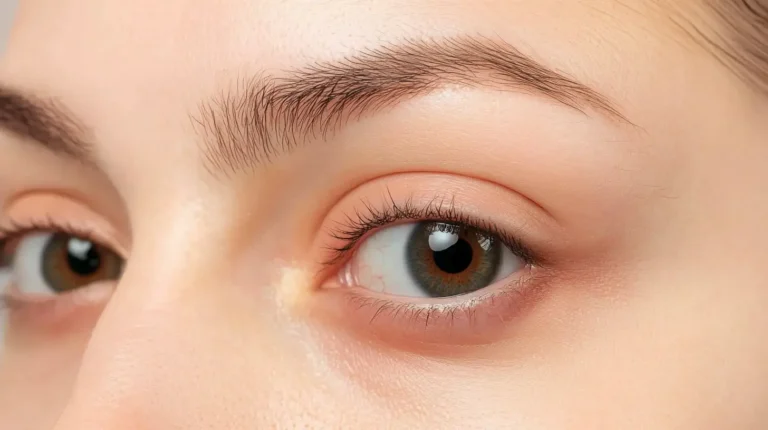Morning vs. Night Skincare Routine – What’s the Difference?
You wake up, stumble to the bathroom, and stare at your reflection wondering why your skincare routine isn’t delivering the glowing results you see on social media.
Here’s the secret: your morning and evening routines should work differently. Understanding these differences transforms your skin game completely.
Why Your Skin Needs Different Care Throughout the Day
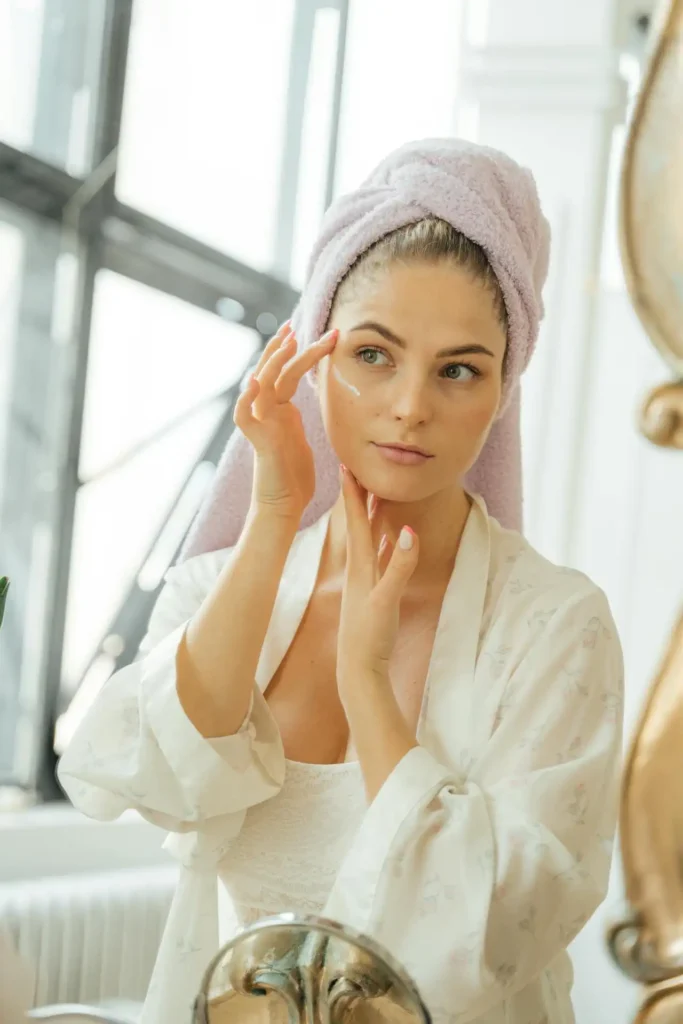
Your skin operates on a natural circadian rhythm, just like your sleep cycle. During the day, your skin focuses on protection mode.
It battles environmental stressors, UV rays, pollution, and free radicals that want to age you faster than a forgotten avocado.
At night, your skin switches to repair mode. Blood flow increases to your face, collagen production ramps up, and your skin works overtime to fix the damage from the day.
This biological difference explains why you need distinct routines for morning and evening.
Think of your morning routine as armor and your nighttime routine as medicine.
You wouldn’t wear heavy armor to bed, and you wouldn’t face a battle with just healing potions. Your skincare needs the same strategic approach.
Morning Routine: Protection and Preparation
Start With Gentle Cleansing
Your morning cleanse should feel refreshing, not stripping. Choose a gentle, pH-balanced cleanser that won’t disrupt your skin barrier.
You’re removing the natural oils and cellular debris that accumulated overnight, plus any nighttime products that didn’t fully absorb.
Foaming cleansers work well for oily skin, while cream or oil cleansers suit dry or sensitive skin types.
Avoid harsh scrubs or strong acids in the morning – save the heavy artillery for nighttime. Hot water feels amazing but leaves your skin tight and irritated.
Water temperature matters more than you think. Use lukewarm water to avoid shocking your skin awake or stripping away protective oils.
Layer Light, Protective Products
Morning products should absorb quickly and play well under makeup. Start with a vitamin C serum to neutralize free radicals and boost collagen production.
Vitamin C also brightens your complexion and helps fade dark spots over time. Apply your serum to slightly damp skin for better absorption.
Pat it in gently – don’t rub vigorously. Your skin absorbs products better when it’s slightly hydrated, and the patting motion stimulates circulation without causing irritation.
Follow with a lightweight moisturizer that hydrates without feeling heavy. Look for ingredients like hyaluronic acid, glycerin, or ceramides.
These humectants draw moisture to your skin and help maintain hydration throughout the day.
Never Skip Sunscreen
Sunscreen is non-negotiable, even on cloudy days or when you’re staying indoors. UV rays penetrate windows and clouds, causing premature aging and increasing cancer risk.
Choose broad-spectrum SPF 30 or higher for daily use. Apply sunscreen as your final step, using about a quarter teaspoon for your face and neck.
Mineral sunscreens with zinc oxide or titanium dioxide work immediately and suit sensitive skin.
Chemical sunscreens take 15-20 minutes to activate but often feel lighter and blend more seamlessly under makeup.
Most people use too little sunscreen, reducing its effectiveness significantly. Reapply every two hours if you’re spending time outdoors.
Evening Routine: Repair and Renewal
Double Cleanse for Deep Clean
Your evening routine starts with removing the day’s accumulation of sunscreen, makeup, pollution, and excess oil. Double cleansing ensures you get everything off without over-scrubbing.
Start with an oil-based cleanser or micellar water to dissolve makeup and sunscreen. This two-step process leaves your skin truly clean without feeling tight or stripped.
Oil attracts oil, making this step incredibly effective at breaking down stubborn products. Massage gently for 30-60 seconds, then rinse.
Follow with your regular water-based cleanser to remove any remaining residue and clean your pores.
Apply Active Ingredients
Nighttime is when you bring out the powerful ingredients that can make your skin photosensitive. Retinoids, AHAs, and BHAs work best when your skin isn’t exposed to UV light.
Retinoids (retinol, tretinoin, adapalene) accelerate cell turnover, smooth fine lines, and improve skin texture.
Start slowly – maybe twice a week – and gradually increase frequency as your skin builds tolerance. Always follow with moisturizer.
Chemical exfoliants like salicylic acid (BHA) or glycolic acid (AHA) dissolve dead skin cells and unclog pores.
BHAs work well for oily, acne-prone skin, while AHAs suit most skin types and provide anti-aging benefits.
Never use multiple active ingredients together when starting out. Your skin needs time to adjust, and combining actives can lead to irritation, redness, and compromised skin barrier function.
Seal With Rich Moisturizer
Evening moisturizers can be richer and more occlusive than morning formulas.
Look for ingredients like ceramides, peptides, niacinamide, and natural oils that support skin repair while you sleep.
Your skin loses more water at night, so a heavier moisturizer helps prevent transepidermal water loss.
This keeps your skin plump, comfortable, and creates optimal conditions for the repair processes happening while you sleep.
Consider face oils as your final step if you have dry skin. Oils like rosehip, marula, or squalane provide an additional barrier to lock in moisture and active ingredients applied earlier.
Common Mistakes That Sabotage Your Results
Using the Same Products Morning and Night
Many people use identical routines twice daily, missing out on the unique benefits each time period offers.
Your morning vitamin C won’t provide the same repair benefits as nighttime retinol, and your heavy night cream will make morning makeup application frustrating.
Timing matters with skincare ingredients. Some work better in daylight, others prefer darkness. Respecting these preferences maximizes your results and minimizes potential side effects.
Overloading Your Morning Routine
Your morning routine should be efficient and protective, not a 12-step marathon. Stick to cleanse, treat, moisturize, and protect in the morning.
Too many products can make your skin feel heavy, interfere with makeup application, and actually increase sensitivity to environmental stressors.
Save the extensive treatments and multiple serums for your evening routine when you have more time and your skin can fully absorb everything.
Skipping Steps When Tired
Evening routines often get shortened when you’re exhausted, but this is when your skin most needs proper care.
At minimum, remove your makeup and sunscreen thoroughly, then apply moisturizer. Create a simplified backup routine for tired nights.
Keep makeup wipes, a gentle cleanser, and your favorite moisturizer easily accessible. Something is always better than nothing.
Customizing Your Routine for Your Skin Type
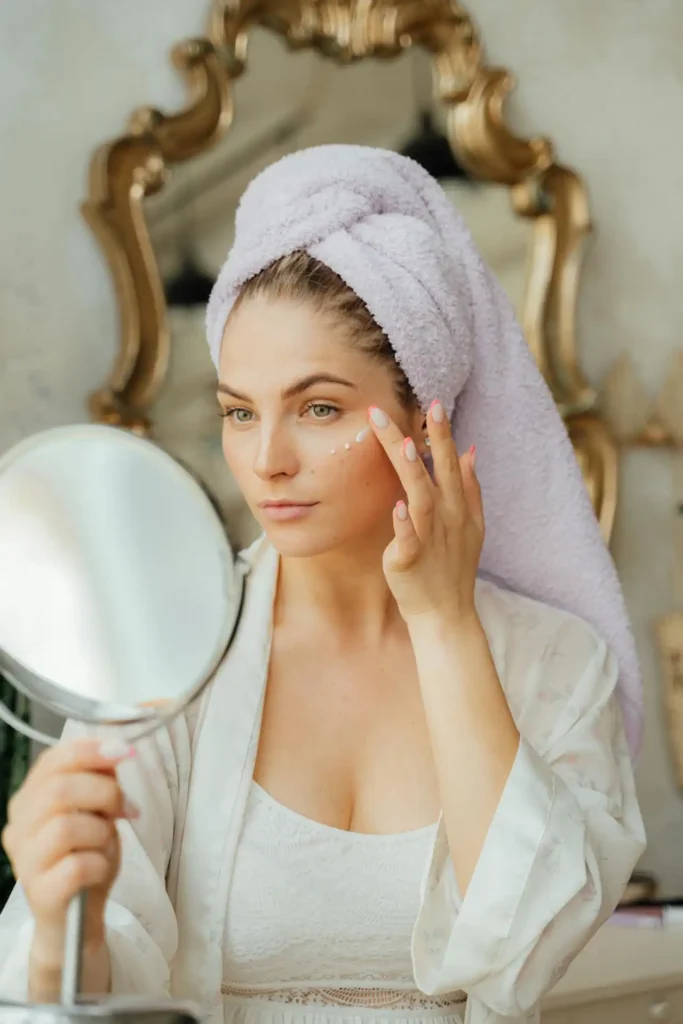
Oily and Acne-Prone Skin
Morning: Gentle foaming cleanser, niacinamide serum, lightweight gel moisturizer, broad-spectrum sunscreen.
Evening: Oil cleanser (yes, even for oily skin), salicylic acid treatment, retinoid 2-3 times per week, gel moisturizer.
Don’t skip moisturizer thinking it will make you oilier. Dehydrated skin often overproduces oil to compensate, creating a cycle of increased oiliness and irritation.
Dry and Sensitive Skin
Morning: Cream cleanser, hyaluronic acid serum, rich moisturizer with ceramides, mineral sunscreen.
Evening: Gentle milk cleanser, peptide serum, retinol once or twice weekly, overnight sleeping mask or rich cream.
Introduce new products slowly and patch test everything. Sensitive skin benefits from fewer ingredients and gentle formulations rather than trying to fix everything at once.
Mature Skin
Morning: Anti-aging cleanser, vitamin C serum, peptide moisturizer, high-SPF sunscreen.
Evening: Double cleanse, retinoid or bakuchiol, hyaluronic acid, rich anti-aging cream with growth factors or peptides.
Consistency matters more than using the most expensive products. Give new additions 6-8 weeks to show results before deciding if they’re working.
Building Your Perfect Routine Timeline
Week 1-2: Establish Basics
Start with the fundamentals: gentle cleanser, basic moisturizer, and sunscreen. Your skin needs to adjust to a consistent routine before you add active ingredients.
Pay attention to how your skin feels and looks. Are you experiencing tightness, redness, or increased sensitivity? These signs indicate you need gentler products or fewer steps.
Week 3-4: Add One Active Ingredient
Choose either a morning antioxidant (like vitamin C) or an evening treatment (like retinol or a gentle acid). Never introduce multiple actives simultaneously.
Start with the lowest concentration available and use it every other day initially. Your skin will tell you when it’s ready for more frequent application.
Month 2 and Beyond: Fine-Tune and Expand
Once your skin tolerates your chosen active ingredient well, you can consider adding complementary products.
Always maintain the protect-by-day, repair-by-night philosophy.
Listen to your skin’s needs as they change with seasons, hormones, stress levels, and age. What works perfectly in summer might feel insufficient in winter’s dry air.
Signs Your Routine Is Working
Positive Changes to Watch For
Your skin should feel comfortable throughout the day without excessive oiliness or tightness.
You’ll notice fewer breakouts, more even skin tone, and improved texture over time. Morning skin should look refreshed and ready for the day.
Evening skin should feel clean but not stripped after cleansing, and products should absorb well without pilling or feeling sticky.
Red Flags That Signal Problems
Persistent irritation, increased breakouts, or skin that feels constantly sensitive indicates your routine needs adjustment.
Don’t push through irritation hoping it will improve – this often makes problems worse.
If multiple new products were introduced recently, strip back to basics and reintroduce items one at a time to identify the culprit.
Seasonal Adjustments for Year-Round Success
Summer Modifications
Lighter moisturizers, gel-based products, and increased sunscreen application keep your skin comfortable in heat and humidity.
You might need more frequent cleansing if you’re sweating more or spending time outdoors.
Consider switching to a physical sunscreen if chemical formulas feel too heavy or cause stinging when you sweat.
Winter Adaptations
Richer moisturizers, face oils, and gentle cleansers help combat dry indoor air and harsh weather.
You might need to reduce exfoliation frequency as your skin becomes more sensitive.
Don’t abandon sunscreen just because it’s cold. Snow reflects UV rays, and winter sun can be surprisingly damaging to unprotected skin.
The Bottom Line on Timing

Your skin’s needs change dramatically between morning and night.
Respecting these differences and choosing appropriate products for each time period maximizes your skincare investment and delivers better results than using random products at random times.
Start simple, be consistent, and remember that good skincare is a marathon, not a sprint. Your future skin will thank you for the effort you put in today.
Conclusion
Morning routines protect and prepare your skin for the day ahead, while evening routines repair and renew overnight.
Understanding this fundamental difference creates the foundation for healthier, more radiant skin.



